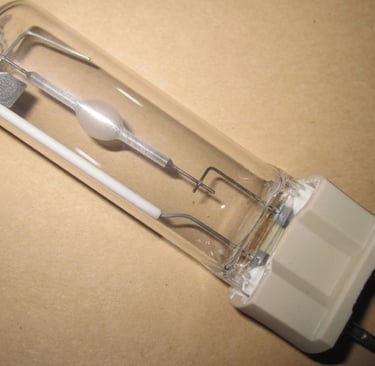Are Metal Halide Bulbs Dangerous? Understanding the Risks and Precautions
Discover the potential risks associated with metal halide bulbs and learn about essential safety precautions to ensure safe operation and handling. Understand how to mitigate risks and protect yourself and your environment.
Azael
10/9/20222 min read


Introduction to Metal Halide Bulbs
Metal halide bulbs are widely used in various applications, including sports lighting, industrial spaces, and outdoor settings. These high-intensity discharge (HID) lamps are known for their efficiency and brightness. However, concerns have been raised regarding their safety, prompting an important question: are metal halide bulbs dangerous?
Health Risks Associated with Metal Halide Bulbs
Metal halide bulbs can pose several health risks if not used properly. One of the primary concerns is the emission of harmful materials during the bulb's lifecycle. If a metal halide bulb breaks, it can release toxic substances such as mercury. Mercury exposure can lead to severe health issues, including neurological damage. It is imperative that appropriate precautions are taken when handling and disposing of these bulbs.
Moreover, the intense light emitted by metal halide bulbs can contribute to eye strain and discomfort. Prolonged exposure can lead to conditions such as photophobia and even damage to the retina. Therefore, it is essential to use protective eyewear when working with these lights, especially in industrial or construction settings.
Safe Usage and Disposal Practices
Despite the potential dangers, metal halide bulbs can be used safely if certain guidelines are followed. Users should ensure that the fixtures designed for metal halide bulbs are well-ventilated to minimize the risk of overheating and possible breakage. Installing protective covers can reduce the chances of injury from shattered glass.
When it comes to disposal, it's crucial to follow local regulations regarding hazardous waste. Many municipalities have special collection programs for mercury-containing products, including metal halide bulbs. Proper disposal reduces the risk of environmental contamination, which can have broader implications beyond immediate health concerns.
Conclusion: Weighing the Risks and Benefits
In conclusion, while metal halide bulbs are not inherently dangerous when used responsibly, they do come with certain risks that users must not overlook. Awareness of mercury hazards, appropriate safety practices, and responsible disposal can mitigate potential dangers associated with these lights. As technology progresses, alternatives such as LED lighting are becoming more prevalent, offering similar benefits with fewer safety concerns. Ultimately, it is up to users to weigh the risks and benefits of metal halide bulbs in their specific contexts.
